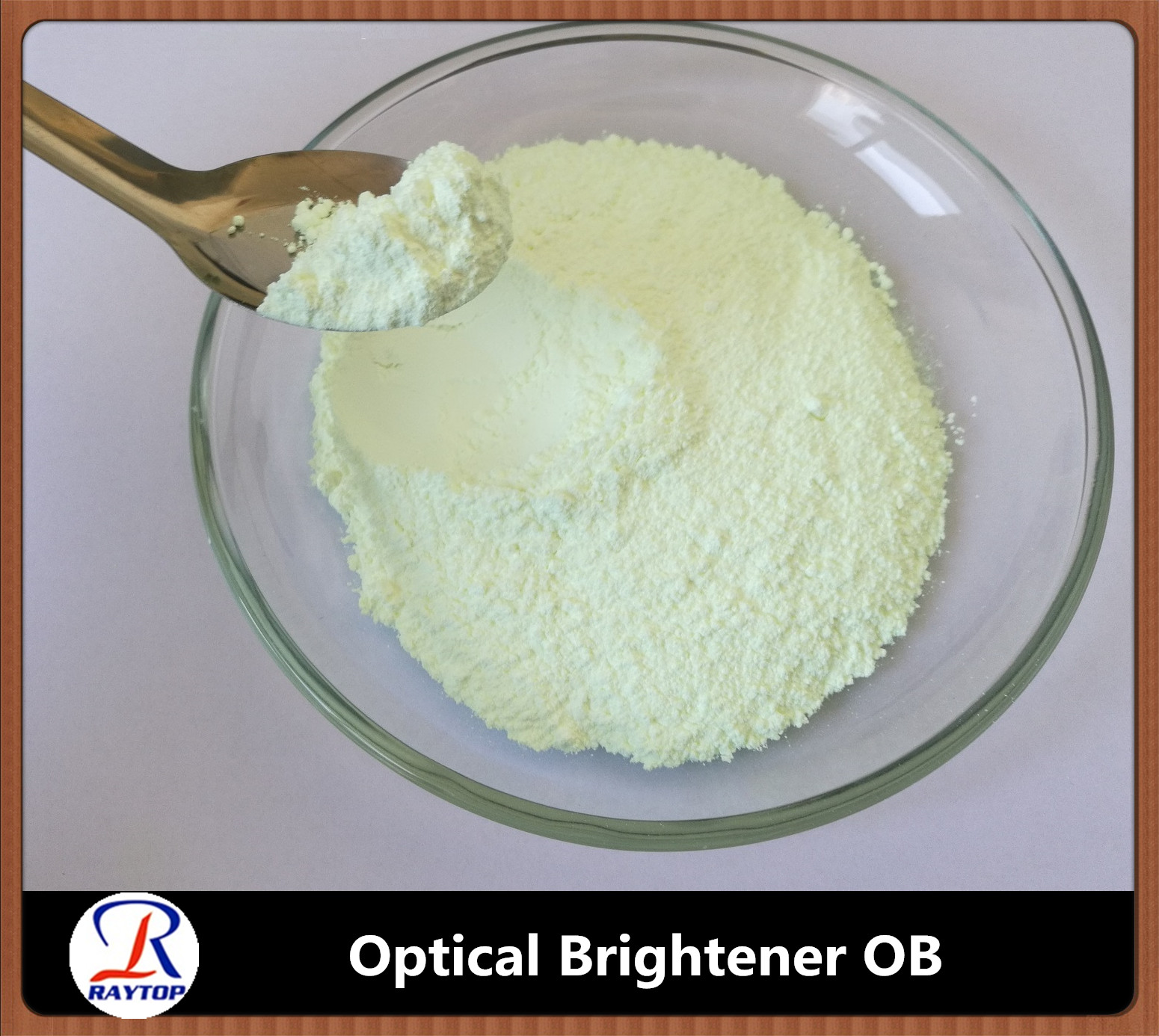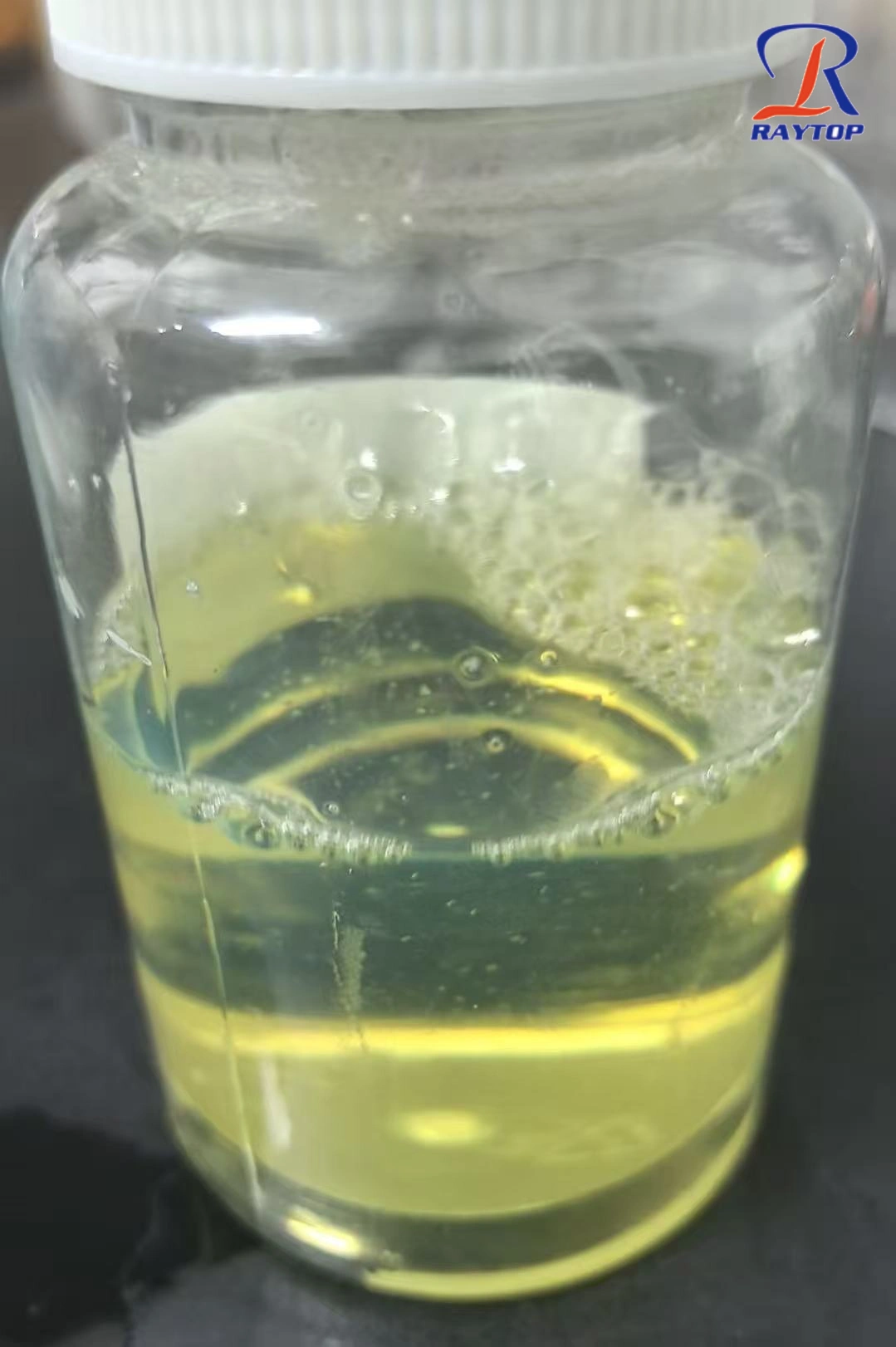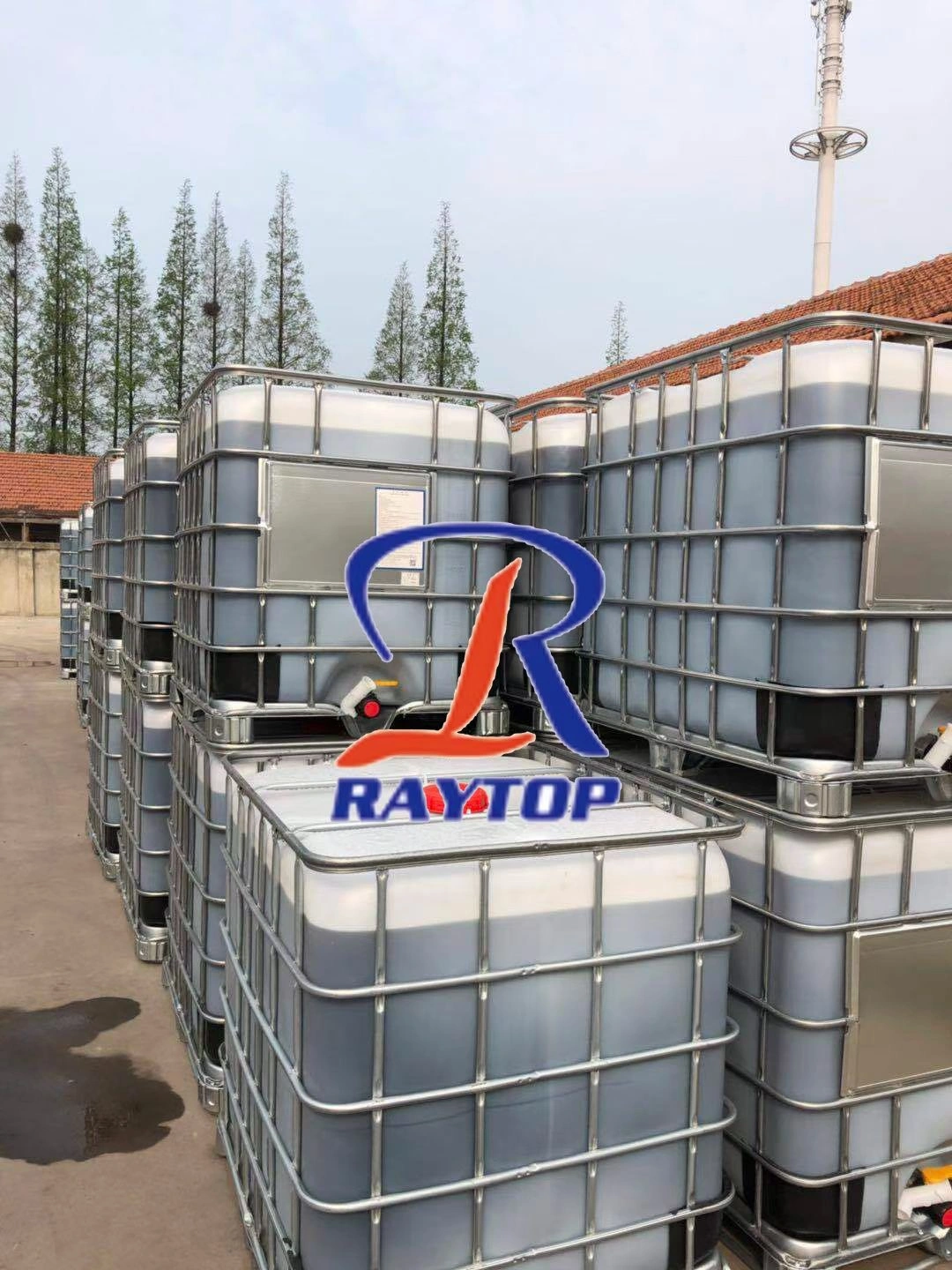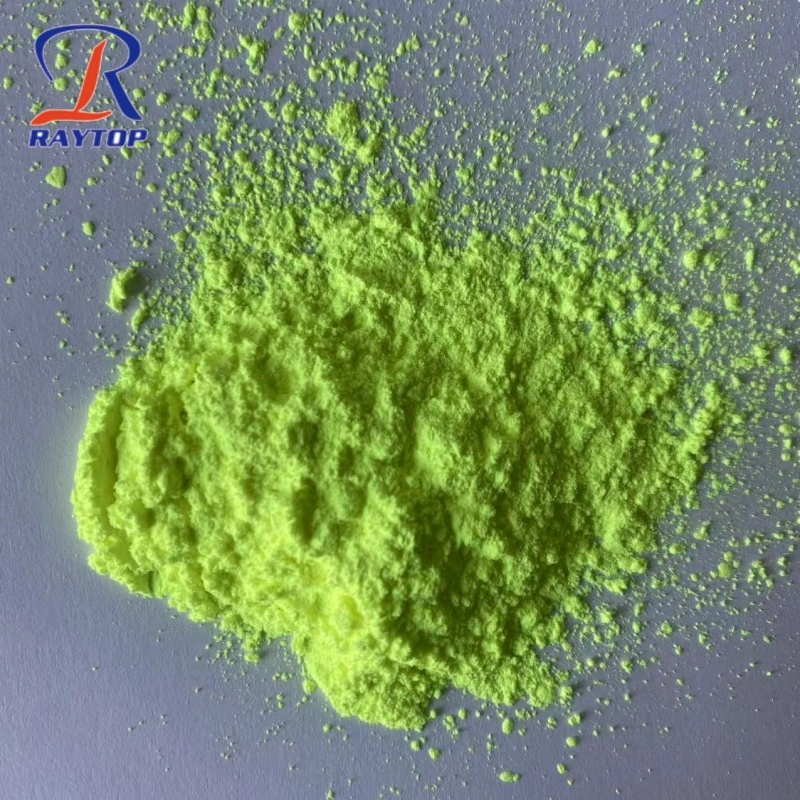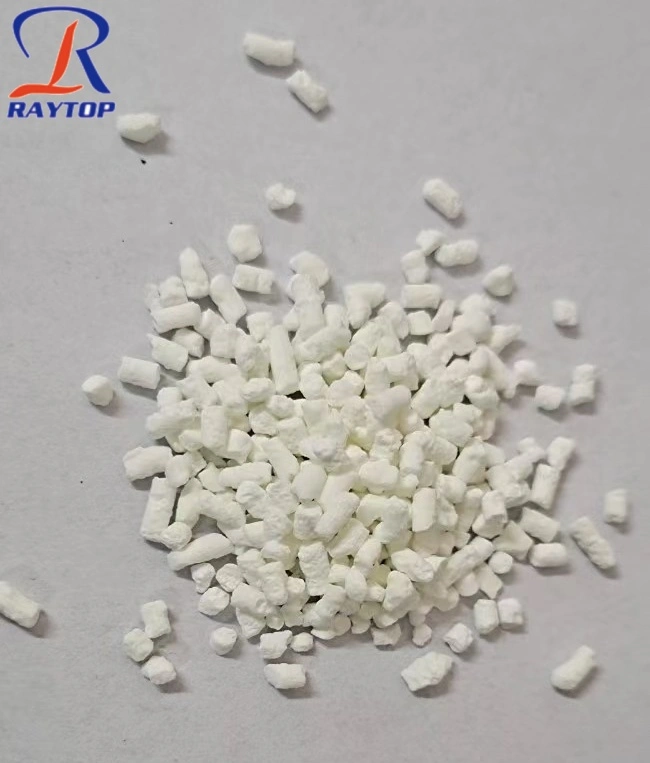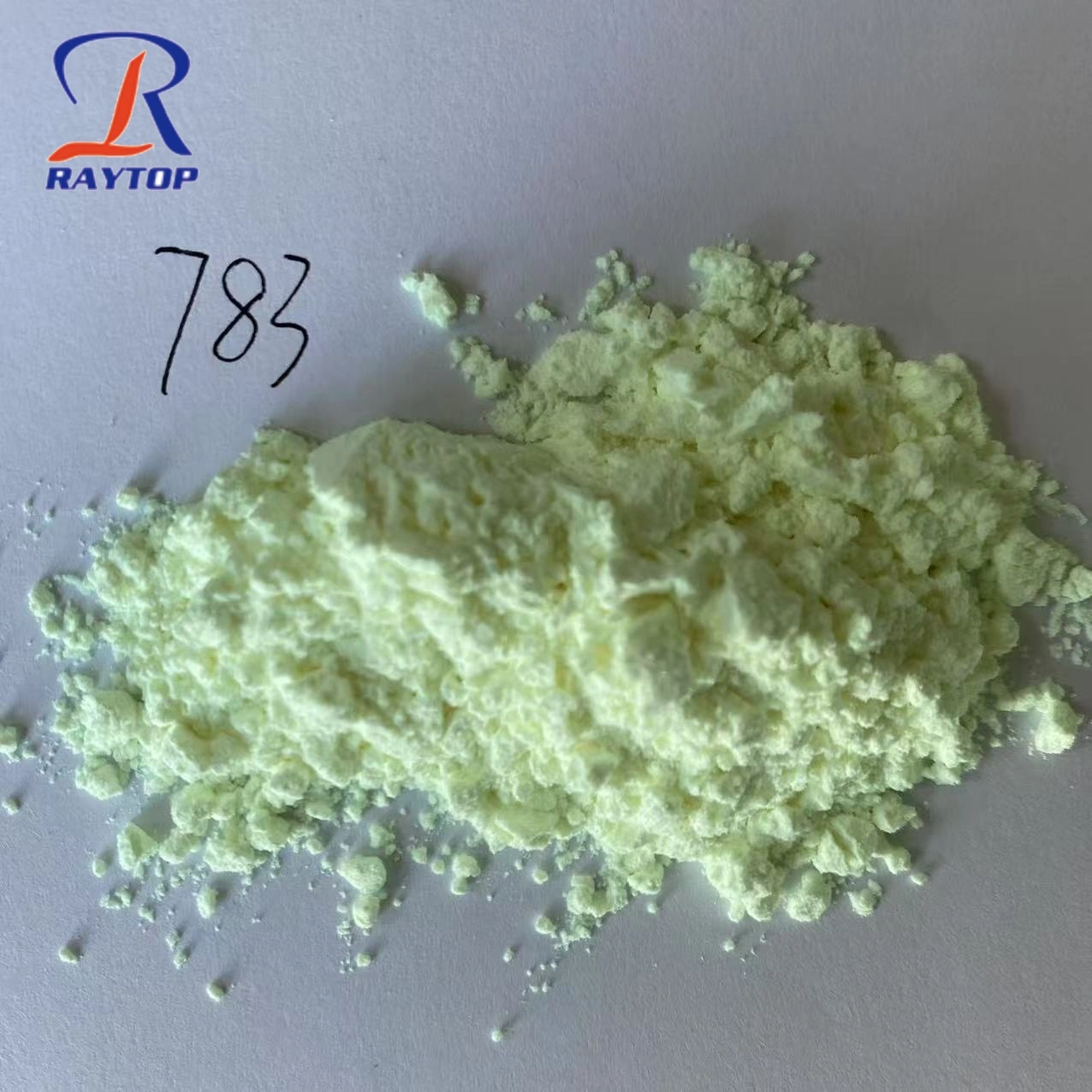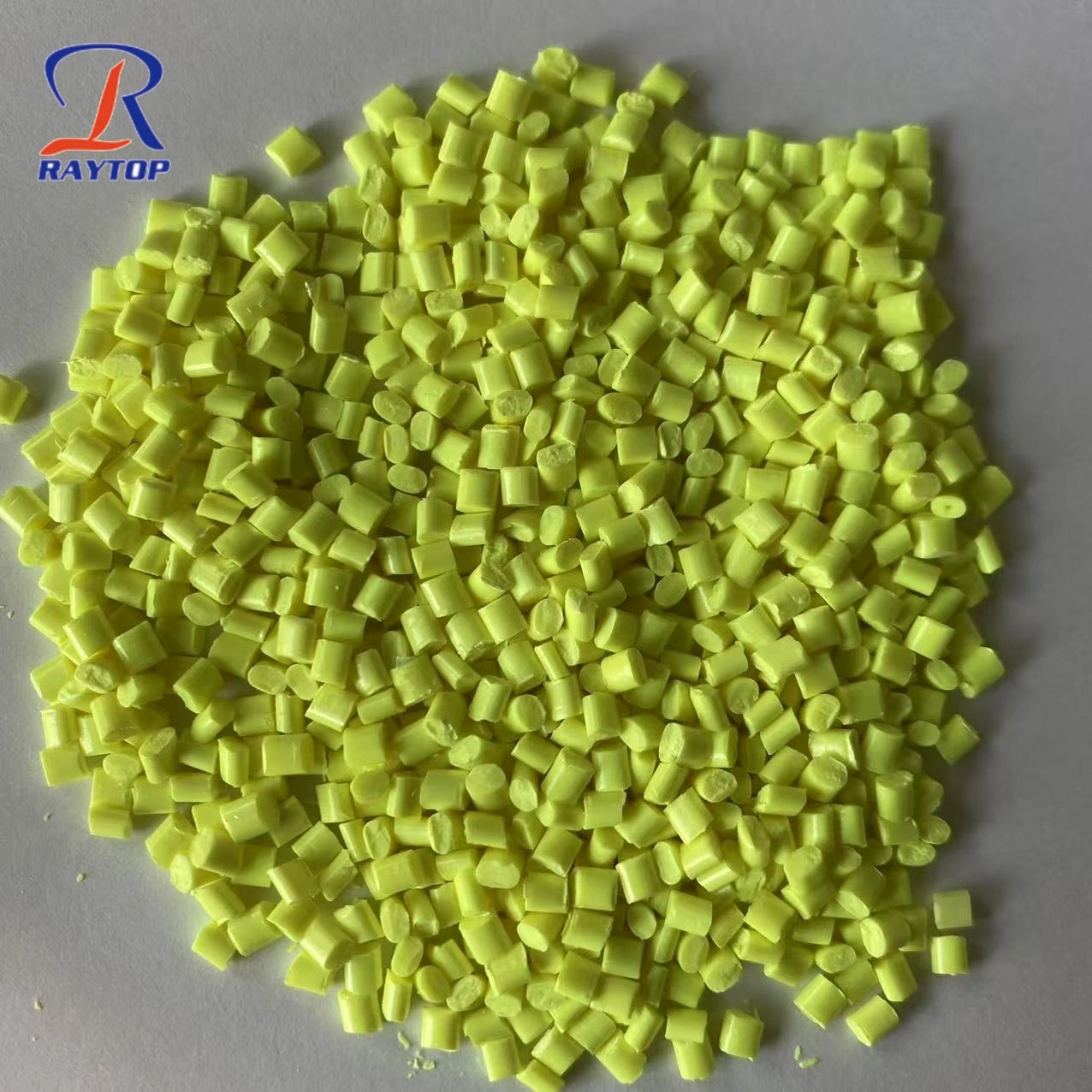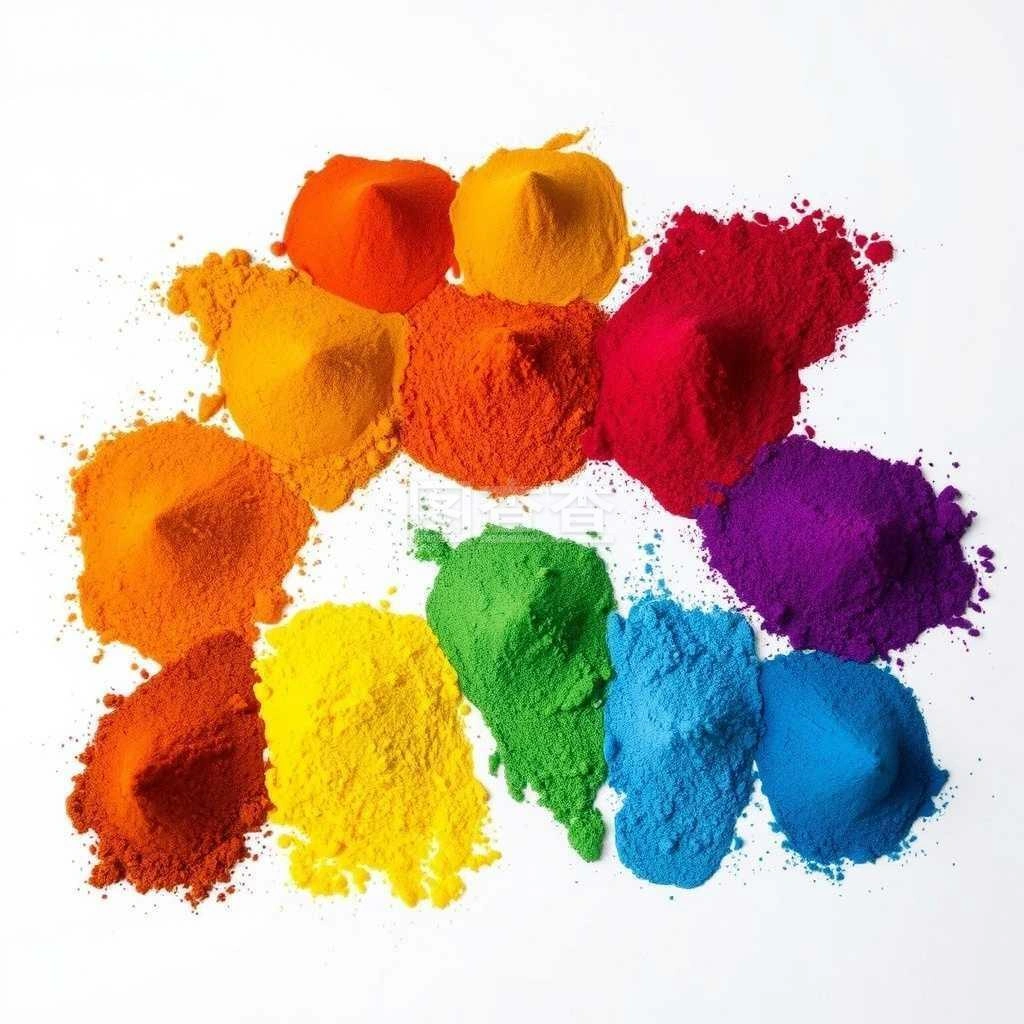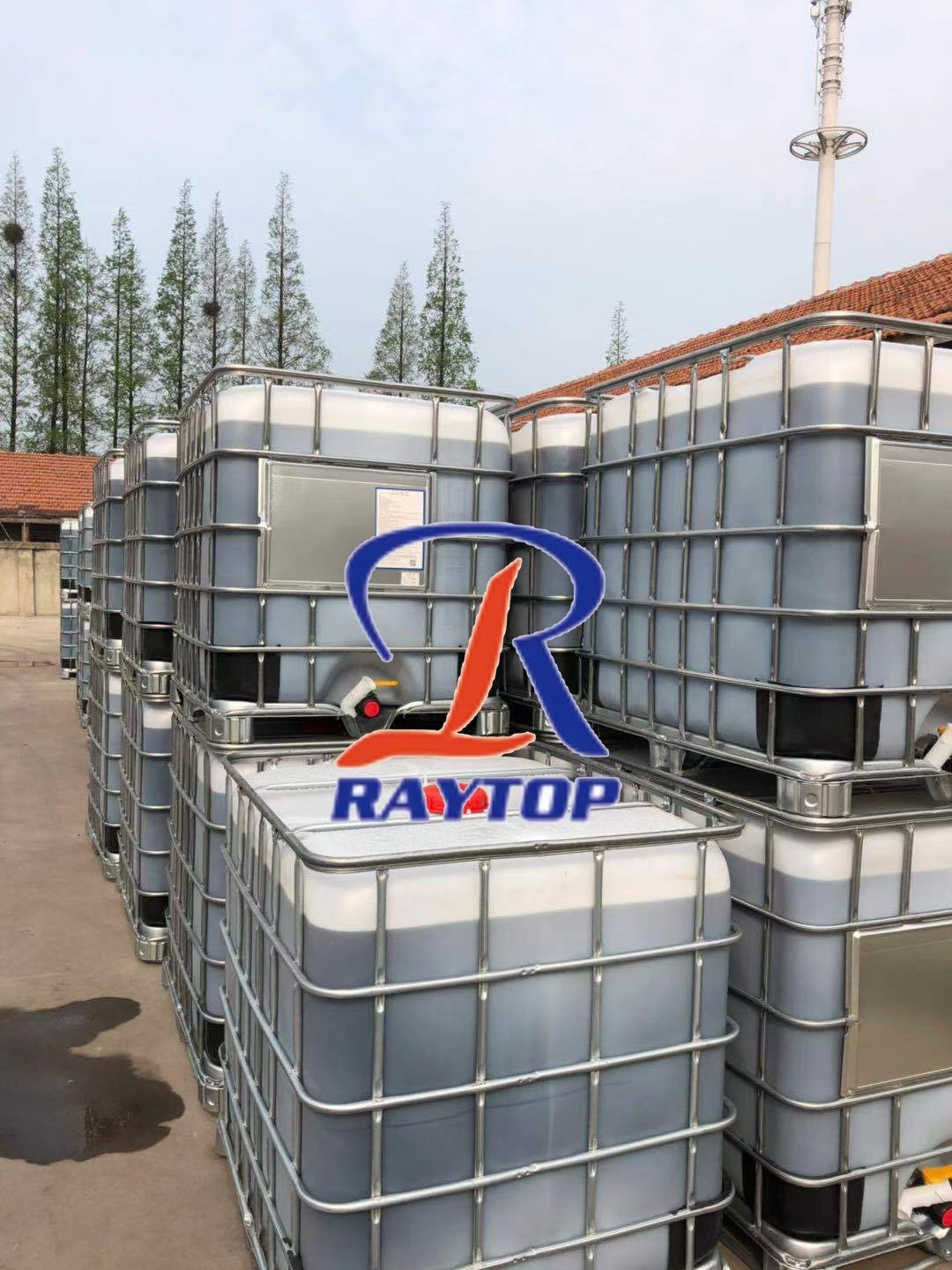Many industries are beginning to use optical brightener, such as paper, plastic, leather, detergent. At the same time, optical brightener is also used in many high-tech fields, such as fluorescence detection, dye laser, anti-counterfeiting printing, and even high sensitivity film for aerial photography. In order to improve the sensitivity of photosensitive latex, optical brightener is also used. In China, optical brightener is first classified as printing and dyeing auxiliaries, and then as dyes. Because of its unique nature and large amount of demand, it has been separated from the above two industries and become a separate class of fine chemical products.
Optical brightener in detergent is the largest user of optical brightener in China, optical brightener in paper is the second largest user, and optical brightener in textile is the third largest user.
1、 Principle and main optical brightener uses and types
The optical brightener can absorb invisible ultraviolet light (wavelength range is about 360380nm) and convert it into blue or purple visible light with longer wavelength, so it can compensate the unwanted yellowish color in the matrix and reflect more visible light than the original incident wavelength in the range of 400600nm, so as to make the product appear whiter, brighter and brighter. Its function is to transform the invisible ultraviolet radiation absorbed by the product into violet blue fluorescent radiation, and complement the original yellow radiation to become white light, so as to improve the whiteness of the product under sunlight. Optical brightener has been widely used in textile, papermaking, washing powder, soap, rubber, plastic, paper, pigment and paint.
Chromatic light
Optical brightener has cyclic conjugated system in chemical structure
① Stilbene type, used in papermaking, soap making and other industries of cotton fiber and some synthetic fibers. It has blue fluorescence;
② Coumarin type, with the basic structure of coumarin, used for celluloid, PVC plastics,PVC hose, etc., with strong blue fluorescence;
③ Pyrazoline type, used for wool polyamide, acrylic fiber and other fibers, with green fluorescent color;
④ Benzooxy nitrogen type, used for acrylic fiber and other fibers and polyhydroethylene, polystyrene and other plastics, with red fluorescence;
⑤ Benzoimide type, used for polyester, acrylic, nylon and other fibers, with blue fluorescence.
2、 The main optical Brightner properties and uses commonly used in plastic products
The optical Brightner can be divided into two types in terms of use, one is water-soluble optical Brightner can be used for whitening paper, paint, washing powder, cotton fabric, and the other is water insoluble optical Brightner can be used for whitening chemical fiber, plastics and so on. The optical brightener commonly used in plastic products mainly includes ob, OB-1, cbs-127, KSN, KCB, etc. it is mainly used to increase the color and whiten of various plastics and reduce the amount of toner.
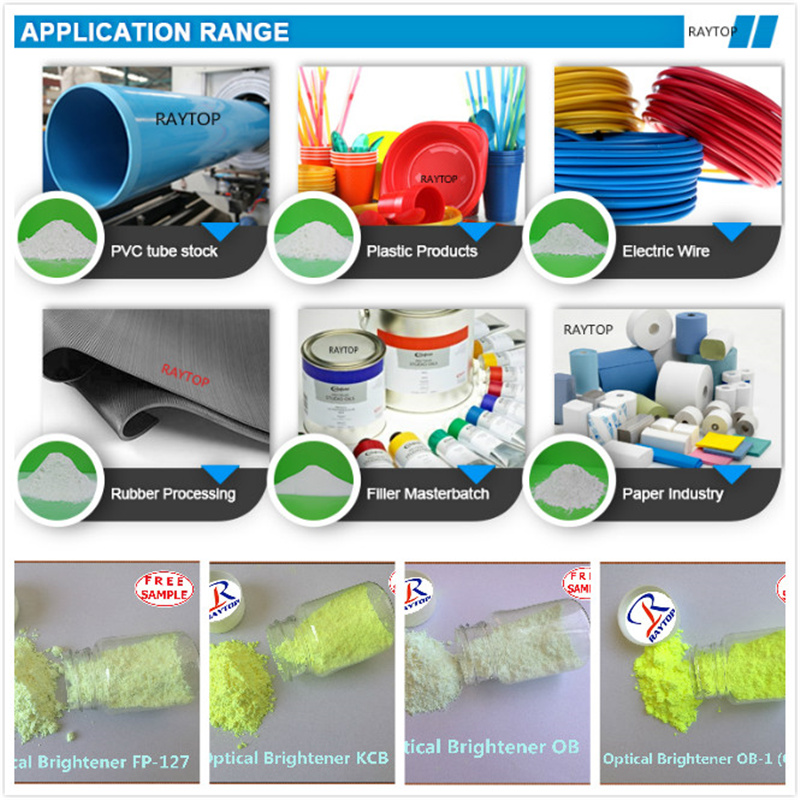
1)、Optical brightener OB uses
CAS No.: 7128-64-5, chemical name: 2,2 '- (2,5-diphenylthio) bis [5 - (1,1-methylethyl)] benzoxazole. Molecular formula: c26h26n2o2s, molecular weight 430. The appearance of the product is light yellow or milky white powder, and the transmittance is 450nm296% and 500nm297%. It is a benzoxazole type compound, insoluble in water, but soluble in alkanes, mineral oils and common organic solvents.
Optical brightener OB
Optical Brightner ob can be used for whitening thermoplastic, poly (ethylene), polystyrene, polyethylene, polypropylene, ABS, acetate fiber, paint, paint, printing paint, etc. optical Brightner ob can be used for whitening polymers in various processing stages, and can give the processed products bright blue and white luster.
1. Plastics & Polymer Processing
OB is a cornerstone additive in the plastics industry, where it combats yellowing caused by polymer degradation, residual monomers, or harsh processing conditions (e.g., high temperatures). Its compatibility with polar polymers and ability to withstand heat make it ideal for:
Polyolefins (PE, PP):
Application: Added to polyethylene films, injection-molded parts, and woven sacks to counteract yellowing from UV exposure or processing.
Dosage: 0.05–0.2 wt%.
Effect: Increases brightness (L* value) by 15–25% and reduces yellowness index (YI) by 50–70%. For example, a polypropylene film treated with OB achieves an L* value of 90 (bright white) compared to 75 (pale yellow) in untreated samples.
Polyesters (PET, PBT):
Application: Used in PET bottles, fibers, and engineering plastics to maintain whiteness during high-temperature processing (e.g., bottle blowing at 250–280°C).
Dosage: 0.1–0.3 wt%.
Effect: Enhances transparency and brightness, with PET bottles showing a 20–30% increase in L* value and reduced haze.
Acrylics & Polycarbonates:
Application: Prevents yellowing in outdoor applications (e.g., automotive parts, outdoor signage) by absorbing UV-induced degradation.
Dosage: 0.08–0.25 wt%.
2. Textiles & Fibers
In textiles, OB brightens synthetic and natural fibers, particularly in white or pastel-colored fabrics, compensating for yellowing from dyeing residues, washing, or aging. Its compatibility with both synthetic and natural fibers makes it versatile:
Synthetic Fibers (Polyester, Nylon, Acrylic):
Application: Added during dyeing, printing, or finishing processes to enhance whiteness without affecting dye fastness.
Dosage: 0.1–0.5 wt% (in bath solutions).
Effect: Increases whiteness index (WI) by 20–40%. A polyester fabric treated with OB shows a WI of 110 (bright white) vs. 75 (off-white) in untreated samples.
Natural Fibers (Cotton, Linen):
Application: Combined with fluorescent dyes to achieve a "pure white" effect in premium textiles (e.g., bed linens, apparel).
Dosage: 0.05–0.3 wt% (in padding or exhaust processes).
3. Paper & Packaging Materials
OB is critical in paper production to enhance the brightness of pulp, especially recycled or unbleached paper, where lignin residues or aging cause yellowing. It is widely used in:
Printing & Writing Papers:
Application: Added during pulping or bleaching to meet premium brightness standards (e.g., ISO brightness ≥90%).
Dosage: 0.1–0.3 wt% of pulp weight.
Effect: Increases ISO brightness by 15–30% and reduces YI by 40–60%, ensuring a "clean white" appearance.
Packaging Papers (Cartons, Food-Grade Papers):
Application: Improves visual appeal of food packaging (e.g., pizza boxes, milk cartons) while complying with food safety regulations (OB is non-toxic and REACH/FDA-compliant).
Dosage: 0.08–0.2 wt%.
4. Coatings, Inks, & Paints
OB is added to coatings and inks to achieve fluorescent whitening effects, making surfaces appear brighter under ambient or UV light.
Architectural Paints:
Application: Incorporated into interior/exterior paints to enhance "whiteness" in low-light conditions (e.g., north-facing walls).
Dosage: 0.1–0.5 wt% (in water-based or solvent-based formulations).
Printing Inks (Flexographic, Gravure):
Application: Improves opacity and brightness in white or pastel ink formulations for packaging labels and magazines.
Effect: Increases opacity by 10–15% and enhances color vibrancy.
5. Detergents & Household Cleaners
While less common than in other industries, OB is occasionally added to detergents to maintain fabric whiteness during washing, compensating for yellowing from sweat, body oils, or environmental pollutants.
Application: Included in liquid or powder detergents for white cotton or synthetic fabrics.
Dosage: 0.1–0.5 g/L (liquid) or 0.5–2% (powder).
Effect: Restores brightness to aged fabrics, with studies showing a 10–15% increase in whiteness after a single wash cycle.
Advantages of OB Over Other Brighteners
High Efficiency: Emits intense blue fluorescence (quantum yield ~0.6–0.7), requiring low dosages (0.05–0.3 wt%) for effective whitening.
Thermal Stability: Withstands processing temperatures up to 280°C, making it ideal for heat-sensitive plastics and fibers.
Water Solubility: Easily incorporated into aqueous systems (textiles, paper, detergents) without phase separation.
Regulatory Compliance: Non-toxic, REACH/FDA/GB-compliant, ensuring safety in consumer products.
Optical Brightener OB is a versatile additive critical for enhancing whiteness across plastics, textiles, paper, coatings, and detergents. Its combination of high efficiency, thermal stability, and compatibility makes it a preferred choice for industries seeking to deliver "bright white" products that meet consumer expectations for aesthetics, quality, and durability.
2).optical brightener HE uses
Optical Brightener HE (typically a stilbene-based fluorescent whitening agent, e.g., 4,4'-bis(2-sulfostyryl)biphenyl disodium salt) is a high-efficiency additive designed to enhance the whiteness and brightness of materials by converting UV light into visible blue fluorescence. Its water solubility, thermal stability, and strong fluorescence make it indispensable across industries.
Plastics: HE is widely used in polyolefins (PE/PP), polyesters (PET), and acrylics to counteract yellowing from processing or UV exposure. Added at 0.05–0.2 wt%, it boosts brightness (L* value) by 15–25% and reduces yellowness.
Textiles: For synthetic fibers (polyester, nylon) and natural fabrics (cotton), HE brightens whites by 20–40%, improving visual appeal in apparel and home textiles without affecting dye fastness.
Paper & Packaging: In paper production, HE enhances brightness of recycled or unbleached pulp, increasing ISO brightness by 15–30% and meeting premium standards for printing/writing papers.
Coatings & Inks: It is added to paints and inks to achieve fluorescent whitening, making surfaces appear brighter under ambient light, with applications in architectural coatings and packaging inks.
HE’s efficiency, thermal stability (up to 280°C), and regulatory compliance (REACH/FDA) make it a preferred choice for high-quality, visually appealing products.
3).optical brightener KCB(FBA367) uses
CAS No.: 5089-22-5 (63310-10-1) belongs to benzoxazole type optical brightener, and its chemical name is 1,4-bis (benzoxazolyl-2-yl) naphthalene. The appearance is light yellow or milky white crystalline powder. Optical Brightener KCB (FBA367), a high-performance stilbene-based fluorescent whitening agent (FWA), enhances material whiteness by converting UV light into visible blue fluorescence, effectively masking yellow tones. Its water solubility, thermal stability (up to 280°C), and strong fluorescence make it a versatile additive across industries.
Optical brightener KCB is widely used in plastics, coatings, inks, textiles and other fields. It can make products not discolor, keep yellow, prevent aging and prolong service life. Optical brightener KCB has a good whitening effect on all kinds of plastics and plastic products. It has a better whitening effect on PVC, PP, PVC and other plastic products, and a particularly ideal whitening and brightening effect on artificial leather products, The utility model has the advantages of no yellowing and no fading after long-term storage.
Plastics: KCB is widely used in polyolefins (PE/PP), polyesters (PET), and engineering plastics to counteract yellowing from processing or UV exposure. Added at 0.05–0.2 wt%, it boosts brightness (L* value) by 15–25% and reduces yellowness index (YI) by 50–70%, ideal for plastic films, injection-molded parts, and fibers.
Textiles: For synthetic fibers (polyester, nylon) and natural fabrics (cotton), KCB brightens whites by 20–40% without affecting dye fastness. Added during dyeing or finishing (0.1–0.5 wt%), it improves visual appeal in apparel and home textiles.
Paper & Packaging: In paper production, KCB enhances recycled or unbleached pulp brightness, increasing ISO brightness by 15–30% and meeting premium standards for printing/writing papers.
Coatings & Inks: It is added to paints and inks to achieve fluorescent whitening, making surfaces appear brighter under ambient light, with applications in architectural coatings and packaging inks.
KCB’s efficiency, thermal resilience, and regulatory compliance (REACH/FDA) make it a preferred choice for high-quality, visually appealing products.
4).optical brightener OB-1 uses
CAS No.: 1533-45-5. Its chemical name is 2,2 - (4,4-stilbene) dibenzazole, and its appearance is bright yellow crystalline powder.
The melting point of optical brightener OB-1 is 351-358 * C, which can withstand 375 ° C high temperature, is all the better heat resistance brightener, especially suitable for high melting point plastics such as polyester (PET), optical brightener OB-1 has strong fluorescent whitening ability, good stability, compatibility with many polymers, is an effective optical brightener for plastic products, widely used in abs.ps.hlps.pa.pc.pp.eva and rigid PVC plastics. Optical brightener OB-1 is also commonly used in polyester corrective fibers. The whiteness of polypropylene, nylon, nylon and polyester can be improved obviously by adding optical brightener OB-1. After adding optical brightener OB-1 to recycled polyester fiber waste, bottle material and chips, the recycled material will appear whiter, and the chroma of different recycled materials will become whiter and consistent. For the whitening of high temperature plastics, we strongly recommend the use of optical brightness OB-1.
Optical brightener OB-1 is added with 0.01 ~ 0.05% of plastic or polyester particles before the molding of various plastic products or before the drawing of polyester fiber, and can be fully mixed with plastic.
5).optical brightener FP-127(FBA378) uses
Optical Brightener FP-127 (FBA378), a high-efficiency stilbene-based fluorescent whitening agent (FWA), is engineered to enhance material whiteness by converting invisible UV light into visible blue fluorescence, effectively masking yellow tones. With strong water solubility, thermal stability (up to 280°C), and a quantum yield of ~0.65, it is widely adopted across industries for its reliable performance.
Optical brightener fp-127 has good whitening effect on all kinds of plastics and plastic products, especially for polyurethane, polypropylene and other plastic products, especially for artificial leather products, and has the advantages of long-term storage without yellowing and fading.
Plastics: FP-127 is a staple in plastic processing, addressing yellowing caused by polymer degradation, residual monomers, or UV exposure. In polyolefins (PE/PP), it is added at 0.05–0.2 wt% to polyethylene films, injection-molded parts, and woven sacks, boosting brightness (L* value) by 15–25% and reducing yellowness index (YI) by 50–70%. For polyesters (PET), used in bottles and fibers, FP-127 maintains whiteness during high-temperature processing (e.g., bottle blowing at 250–280°C), enhancing transparency and reducing haze by 30–40%.
Textiles: In synthetic fibers (polyester, nylon) and natural fabrics (cotton), FP-127 brightens whites by 20–40% without compromising dye fastness. Added during dyeing or finishing (0.1–0.5 wt%), it improves visual appeal in apparel and home textiles, with treated polyester showing a whiteness index (WI) increase from 75 to 110.
Paper & Packaging: FP-127 is critical for enhancing recycled or unbleached pulp brightness, increasing ISO brightness by 15–30% and meeting premium standards for printing/writing papers. It also improves food-grade packaging (e.g., cartons) by maintaining brightness while complying with FDA/REACH safety regulations.
Coatings & Inks: Added to architectural paints, flexographic inks, or gravure inks, FP-127 achieves fluorescent whitening, making surfaces appear brighter under ambient light. In coatings, it enhances opacity by 10–15%, while inks gain vibrancy in pastel formulations.
With its thermal resilience, compatibility, and regulatory compliance, FP-127 remains a go-to choice for industries seeking durable, visually striking white materials.
6).optical brightener KSN(FBA368) uses
CAS number: 5242-49-9, molecular formula: c29h2on2o2. The appearance is bright yellow powder. It is insoluble in water and soluble in high boiling organic solvents such as benzene trioxide. The structure type is stilbene dibenzimidazole compound.
Optical brightener KSN has similar chemical structure to optical brightener OB-1, but its whitening effect on polyester fiber and plastic products is better than that of optical brightener OB-1, and its compatibility with plastic is better than that of optical brightener OB-1. Optical Brightener KSN (commonly referred to by its trade name FBA368, and chemically known as 4,4'-bis(2-sulfostyryl)biphenyl disodium salt) is a high-performance fluorescent whitening agent (FWA) belonging to the stilbene family. Characterized by its excellent water solubility, thermal stability, and broad compatibility, KSN is widely used across industries to enhance the whiteness, brightness, and visual appeal of various materials. Below are its primary applications and key use cases:
1. Plastics & Polymer Processing
KSN is a go-to brightener for plastics due to its strong fluorescence, heat resistance, and compatibility with polymer matrices. It is used to counteract yellowing caused by polymer degradation, residual monomers, or processing conditions (e.g., high temperatures).
Key Plastics:
Polyolefins (PE, PP): KSN improves whiteness in polyethylene films, injection-molded parts, and woven sacks. Typical dosage: 0.05–0.2 wt%.
Polyesters (PET, PBT): Enhances brightness in PET bottles, fibers, and engineering plastics. Adds 10–20% to the L* value (brightness metric in colorimetry) and reduces yellowness index (YI) by 50–70%.
Acrylics & Polycarbonates: Prevents yellowing during UV exposure or outdoor use, maintaining long-term whiteness.
Processing Conditions: KSN remains stable up to 280°C, making it suitable for injection molding, extrusion, and blow-molding processes.
2. Textiles & Fibers
In textiles, KSN is used to brighten synthetic and natural fibers, especially in white or pastel-colored fabrics. It compensates for yellowing from dyeing residues, washing, or aging.
Target Fibers:
Synthetic Fibers (polyester, nylon, acrylic): KSN is highly compatible with these materials, improving whiteness without affecting dye fastness. Dosage: 0.1–0.5 wt% (in dye baths or finishing treatments).
Natural Fibers (cotton, linen): Often combined with fluorescent dyes to achieve a "bright white" effect, especially in premium textiles like bed linens or apparel.
Performance Data: Treated cotton fabric shows a 20–40% increase in whiteness index (WI) compared to untreated samples, with no significant impact on softness or breathability.
3. Paper & Packaging Materials
KSN is widely used in paper production to enhance the brightness of pulp, especially recycled or unbleached paper. It counteracts yellowing from lignin residues or aging.
Applications:
Printing & Writing Papers: Increases whiteness to meet premium standards (e.g., ISO brightness ≥90%).
Packaging Papers (cartons, food-grade papers): Improves visual appeal while maintaining food safety (KSN is non-toxic and complies with FDA/EC regulations for indirect food contact).
Dosage: Typically 0.1–0.3 wt% of the pulp weight, resulting in a 15–30% increase in ISO brightness.
4. Coatings, Inks, & Paints
In coatings and inks, KSN is added to achieve fluorescent whitening effects, making surfaces appear brighter and more vibrant under ambient or UV light.
Key Uses:
Architectural Paints: Enhances the "whiteness" of interior/exterior paints, especially in low-light conditions.
Printing Inks (flexographic, gravure): Improves opacity and brightness in white or pastel ink formulations for packaging and labels.
Compatibility: KSN dissolves well in water-based and solvent-based systems, with no adverse effects on drying time or film formation.
5. Detergents & Household Cleaners
While less common than in other industries, KSN is sometimes added to detergents to maintain the whiteness of fabrics during washing. It compensates for yellowing caused by sweat, body oils, or environmental pollutants.
Dosage: 0.1–0.5 g/L (in liquid detergents) or 0.5–2% (in powder detergents).
Effect: Restores brightness to aged cotton or synthetic fabrics, with studies showing a 10–15% increase in whiteness after a single wash cycle.
Advantages of KSN Over Other Brighteners
High Quantum Yield: Emits intense blue fluorescence (quantum yield ~0.6–0.7), ensuring effective whitening at low dosages.
Thermal Stability: Withstands processing temperatures up to 280°C, making it ideal for heat-sensitive plastics.
Water Solubility: Easily incorporated into aqueous systems (e.g., textiles, paper, detergents) without phase separation.
Low Toxicity: Non-carcinogenic and compliant with global safety standards (REACH, FDA, GB), expanding its use in consumer products.
Optical Brightener KSN (FBA368) is a versatile additive critical for enhancing whiteness in plastics, textiles, paper, coatings, and detergents. Its combination of high efficiency, thermal stability, and compatibility makes it a preferred choice across industries seeking to deliver "bright white" products that meet consumer expectations for aesthetics and quality.
3、Methods and steps of using optical brightness
First of all, a certain proportion of optical brightener is dissolved in the multi-functional plasticizer. Here we use 100kg of new material, add about 20g of optical brightener and 300g of plasticizer. This is based on the proportion of old material. The more the old material, the greater the amount
The real use of plastic optical brightener
After the whitening agent and plasticizer are fully fused, they are put into the mixer to mix with the material evenly
The real use of plastic optical brightener
Feeding can be carried out in various ways, air extraction, screw feeding
About Raytop
Raytop, a leading manufacturer in the field of optical brighteners, specializes in the research, development, production, and sales of high-quality optical brighteners with various specifications and applications.
We cater to a global clientele, offering optical brighteners that significantly enhance the whiteness, brightness, and overall visual appeal of materials across diverse industries such as textiles, papermaking, plastics, coatings, and daily chemicals. Recognizing the distinct performance requirements across different sectors and applications, Raytop continuously innovates to introduce a range of optical brightener models tailored to meet our customers' diverse needs.
Adhering to international quality management system standards, Raytop ensures rigorous quality control and inspection throughout the production process, from raw material sourcing to final product dispatch. We prioritize environmental protection and sustainable development, striving to produce eco-friendly optical brighteners that not only deliver value to our customers but also align with our corporate social responsibility.
Guided by the principle of "Customer First, Quality Foremost," Raytop has garnered widespread acclaim from clients worldwide for our professional expertise, superior products, and comprehensive services. Looking ahead, we remain committed to deepening our expertise in optical brighteners, pursuing innovative breakthroughs, and providing even more exceptional products and services to our global partners, jointly forging a brighter future.
